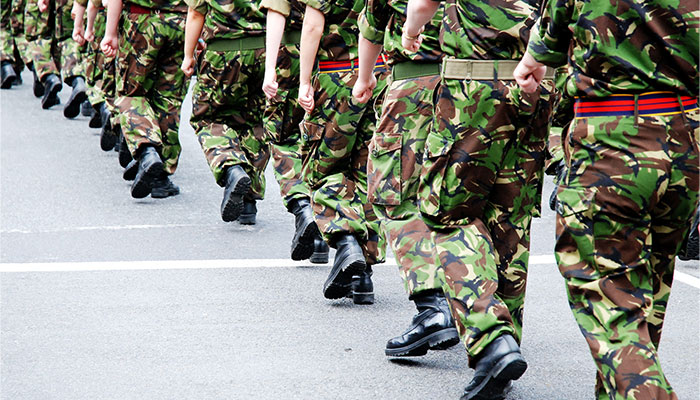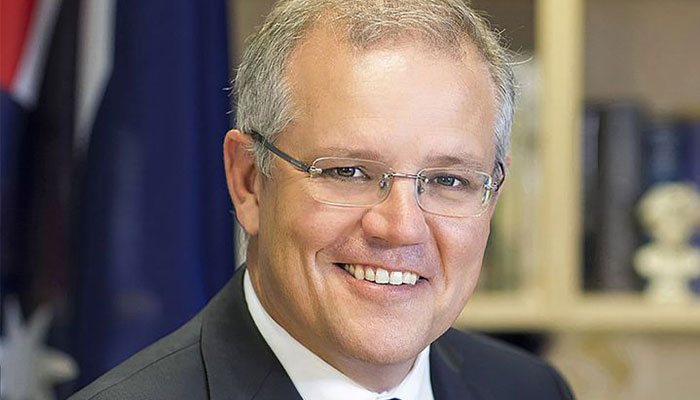The rhetoric around a ‘wartime footing’ is being used to combat the ‘invisible enemy’ of COVID-19, but the harnessing of war metaphors by political leaders and journalists can have unintended social consequences. These include public shaming and demonisation of minorities, as has occurred during past pandemics when ‘invisible’ enemies have been transformed into visible targets.

Fighting words: leaders and journalists have a responsibility to avoid ‘fanning the flame of panic’ through references to the ‘Chinese virus pandamonium’ and war, says Professor Lucy Taksa of the Macquarie Business School.
Although ubiquitous, war metaphors are misleading at best, and harmful at worst since they can increase political and cultural polarisation and risks to personal and social wellbeing.
As Susan Sontag argued in her 1991 book Illness as Metaphor and Aids and Its Metaphors, when disease ‘becomes adjectival’, its horror ‘is imposed on other things’ and it becomes a proxy for social disorder. The labelling of COVID-19 as the ‘Chinese virus’ by some elements of the media and political leaders provides one example of how an ‘invisible enemy’ is transformed into a visible target with a racist overtone.
We find this metaphoric contagion evident in racism against people of Chinese origin, reflecting what has been described as a disturbing ‘resurgence in “yellow peril” mythology’ circulating in a range of media outlets, which could also extend to other minorities.
The labelling of COVID-19 as the ‘Chinese virus’ ... provides one example of how an ‘invisible enemy’ is transformed into a visible target with a racist overtone.
As the NZ Race Relations Commissioner Meng Foon stressed: “Anxiety and fear should never be a reason to discriminate and vilify Chinese or any other group.”
However, in the past this is precisely what has occurred in what has been described as a ‘continuous playback loop’ when reflecting on the current echoes of the H5N1 virus in 1997 in Hong Kong.
Similar refrains can be heard in relation to the SARs pandemic of 2002-2003. Called the ‘Chinese disease’, this pandemic witnessed a wave of xenophobia in Canada that has now resurfaced.
Likewise, after H1N1 flu spread from Mexico in 2009, Mexican immigrants were often pronounced guilty by association, while Mexican nationals and their products were shunned across the globe. In the US, some talk show hosts portrayed Mexican immigrants as disease vectors.
Name, shame and blame
The panic and psychological impact of epidemics can manifest itself through societal divisiveness, while also raising social tensions as frustrations are taken out on a ‘visible enemy’. Examples abound throughout history of the scapegoating of distinctive minority groups. Jewish people were singled out during plague epidemics in Europe during the Middle Ages.
During the bubonic plague in Sydney – which spread to Australia from China and India a year before the Immigration Restriction Act, 1901 formalised the White Australia policy – the collective fear of Asia and Asian invasion contributed to mass hysteria that reinforced the mistaken belief that the disease had been introduced to Australia by recently arrived Chinese seamen and immigrants.
- How Sydney has coped with pandemics in the past
- What relationship will you have with your robo colleagues
The plague was referred to as the ‘Asiatic harvest’ and Sydney’s Chinese community bore the brunt of most attacks, including the boycotting of their businesses, while members of Sydney’s Syrian community were also attacked and vilified.
Referring to the Influenza Pandemic of 1918-1919, historian Richard Collier noted that after naming a disease “it was but a short step to pointing an accusing finger – often at any ethnic group that differed from the norm.”
It is incumbent on governments and the media to minimise the negative social impacts of the coronavirus.
As my own research showed in an article 'The Masked Disease: Oral History, Memory and the Influenza Pandemic, 1918-1919', which appeared in the book Memory and History in Twentieth Century Australia, the names given to this disease in different parts of the world reflected prevailing concerns about certain ethnic groups and ideologies.
The disease was called the ‘Singapore fever’ in Penang and the Bolshevik disease in Poland. In Sydney, the influenza was conflated, first with the bubonic plague, then the ‘Bolshevik pneumonia’ and the NSW General Strike of 1917.

Damaging and dangerous: the words of war being used to describe an invisible enemy liek covid19 can lead to public shaming and demonising of minorities, says Professor Lucy Taska (pictured).
The tendency to name, shame, blame and isolate during such extraordinary times needs to be remembered and considered seriously at a time when the world is gripped by divisive populism not too dissimilar from the populism that characterised the aftermath of World War 1 and the Bolshevik Revolution of 1917.
Fanning the flames
In March 1919, the Australian Medical Journal argued that the daily press was guilty of ‘fanning the flame of panic’ by renaming the influenza, ‘the Plague’. This harked back to the sensational accounts of the ‘medieval Black Death’ in the popular press a decade earlier. For historian Humphrey McQueen, the panic caused by the 'Flu Pandemic' could only be appreciated by considering the way it had been represented in the press.
Given the prevailing fears caused by cultural differences and global economic conditions, it is incumbent on governments and the media to minimise the negative social impacts of the coronavirus.
Journalists have a responsibility to avoid ‘fanning the flame of panic’ through references to the ‘Chinese virus pandamonium’ and war. Governments have a responsibility that extends beyond preventing the spread of the disease to preventing the spread of stigma and racism.
We all need to avoid associating the disease with one country and any group of people and be mindful of the way naming operates as a process of social exclusion. Surely it is time to not only learn from past errors but also to avoid them.
Professor Lucy Taksa is Co-Director of the Centre for Workforce Futures at Macquarie University’s Business School. The Australian Financial Review named her as one of the 100 Women of Influence for 2019.



